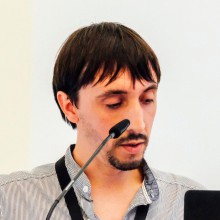
1/ Digitisation of sources
Biblissima+ intends to continue to promote the digitisation of manuscripts, but also of research archives and printed collections, through the collaboration of the IRHT and the GED. These two operators will benefit from the synergies created by the Campus Condorcet and which will be instilled by the Biblissima+ partner projects. Thanks to the purchase of an A1 and A2 format digitisation station, the Équipex+ partners will be able to digitise all types of corpora in libraries, archives or museums, including the smallest repositories.
A reflection will also be carried out to address the problems of digitisation of scientific heritage archives. In connection with the Equipex+ project submitted by Persée and supported by the network of university and research libraries, the NumaHop tool could be used to facilitate the digitisation process, saving time and improving visibility at each stage.
2/ 3D digitisation
The 3D digitisation of bindings, inscriptions, seals, coins and any object bearing text will make it possible to increase the ability of examining and comparing these objects and the texts they bear. Thanks to the extension of image capture techniques, using 3D scanning, but also photomechanics and the properties of laser light developed by the Pprime Institute (P'), research in epigraphy on texts that have become unreadable, in particular graffiti, will be continued.
Cluster 1 will work in close collaboration with :
- the SIGILLA programme,
- the work of cluster 3 for the development of automatic character recognition software.
3/ Image interoperability: Biblissima+ IIIF360 service
It is crucial that all digitisation campaigns now ensure the adoption of the IIIF standards (International Image Interoperability Framework™), which allows images from any digital library in the world to be delivered and manipulated remotely (see also, in French: https://iiif.biblissima.fr).
The efforts undertaken since 2018 by Biblissima, the Campus Condorcet and the TGIR Huma-Num, which together created IIIF360, an offer of expertise and a technical support, hosting and development service for higher education and research institutions, as well as heritage institutions, will be continued. In order to fulfill the most common needs of projects using IIIF, we are planning, for example, to develop the IIIF-Omeka S package and to extend the Mirador viewer.
The extension of Biblissima+ to the French archives sector will also make it possible to disseminate and implement IIIF among a new category of image providers with great potential for the richness of the portal and its tools. A series of pages dedicated to this initiative for archives are available on the IIIF@Biblissima website: https://iiif.biblissima.fr/reseau-archives/iiif360-archives/.
All the documentation produced as part of Cluster 1 is deposited and shared freely on the Zenodo platform in a dedicated collection: https://zenodo.org/communities/biblissima-cluster1